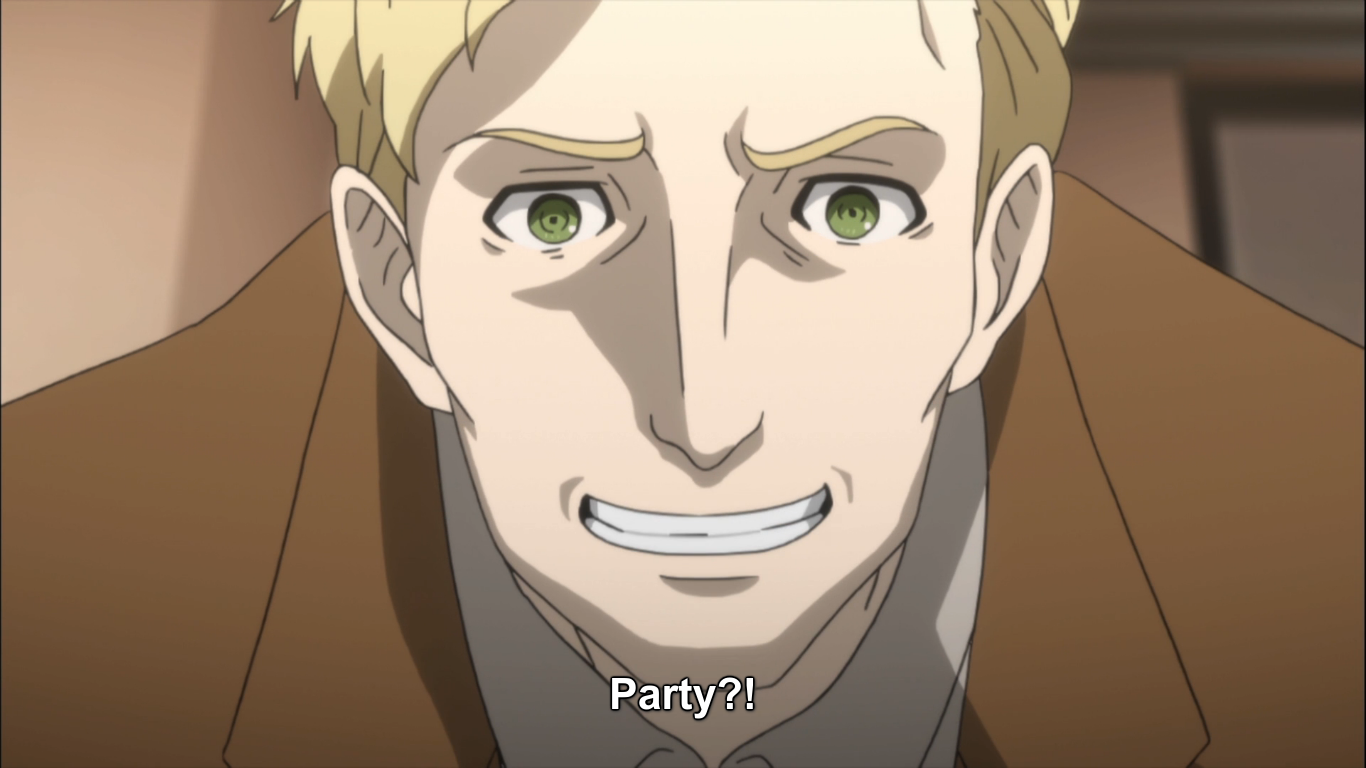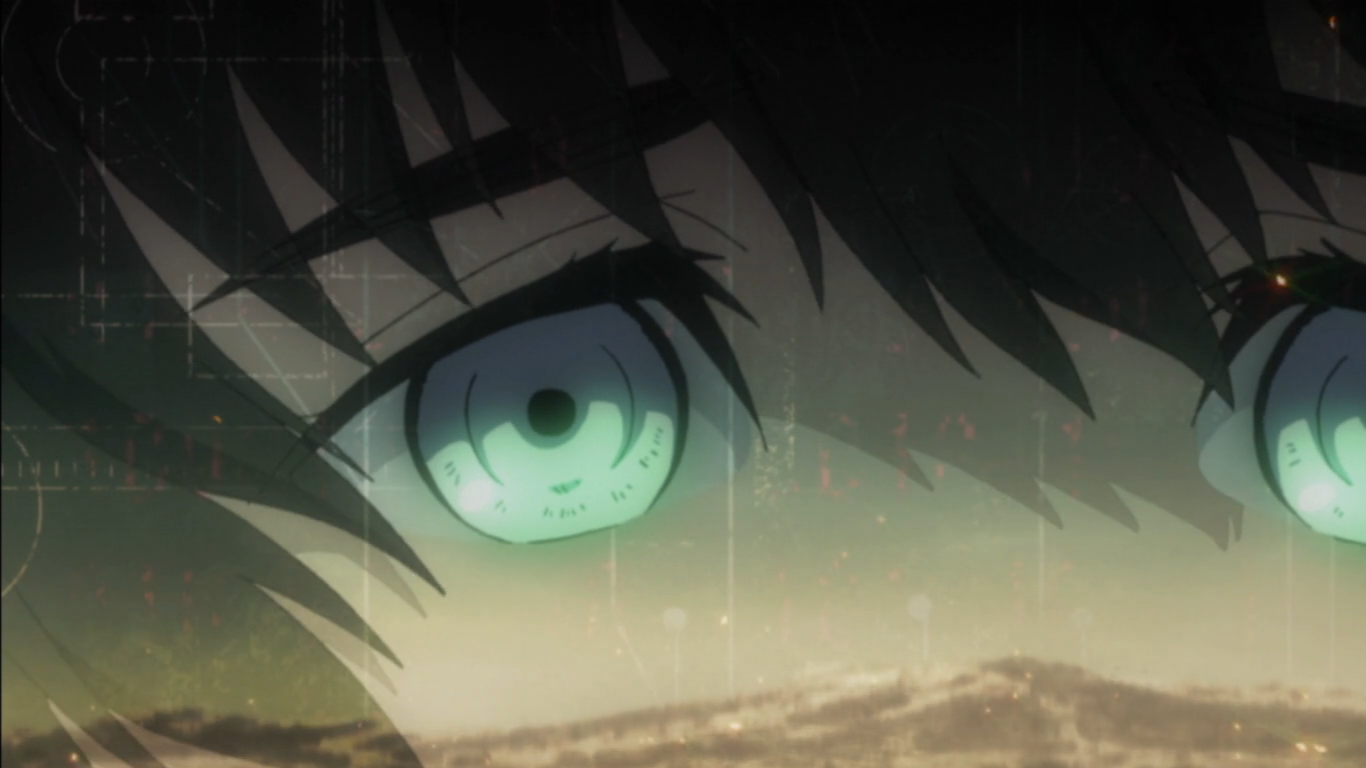
You may have noticed that I’ve skipped episodes two and three in my weekly reviews (in fact, I’ve been missing a lot of episodes recently) part of that is due to being busy with that 6/10 video game known as real life, as well as working my way through a long JRPG that I hope to review soon. But part of if is also due to me not wanting to review an individual episode unless I feel like I can get a substantial post out of it.
For example, the past two episodes of Steins;Gate 0, as well as this one to some extent, have been largely focused on setting up plot points for later. Steins;Gate 0 does feel like it’s been trying to pace its episodes in such a way that each one ends with some dramatic hook that makes you want to tune in for next week, but for the most part, not much is really happening. The pins are merely being set up so that they can be knocked down later. That doesn’t mean that the episodes aren’t interesting of course, it simply means that there’s not much I can do except compare the adaption to the visual novel whilst trying to restrain myself from letting spoilers slip.
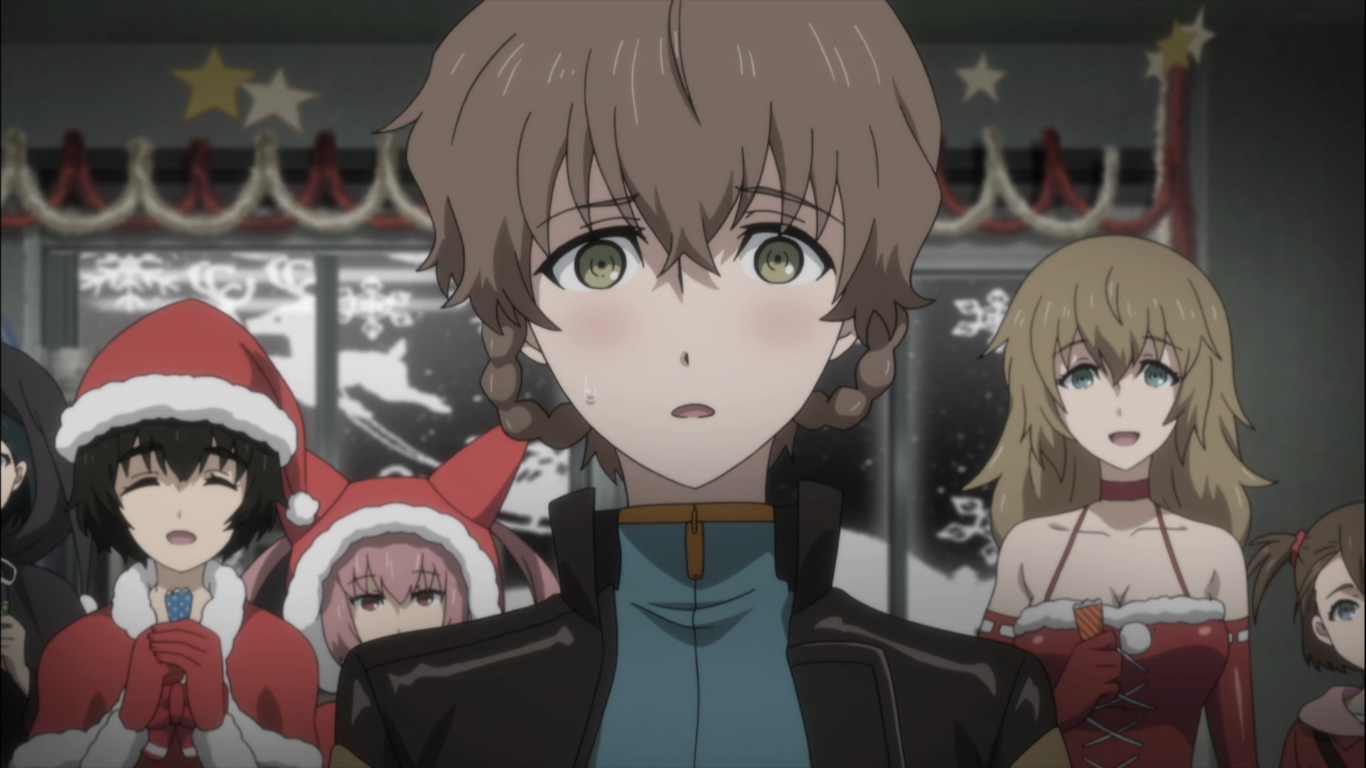
After the end of the last episode however, I told myself I was going to review this episode, because the last episode ended with the timelines shifting in the middle of the Christmas party. After seeing how it was handled in this episode, I have to say that I’m not impressed with how the anime chose to handle this scene.
Some context first. This episode starts off with Okabe in a war setting, there’s no indication of how Okabe got there, and neither the soldiers nor Okabe’s internal monologue explain anything about what is going on. After some soldiers are gunned down by an attack helicopter, the scene cuts to Okabe in a grayscale room with a general whose face is obscured. A phone rings, Okabe is told to answer it, and immediately the scene cuts to waking up in bed as if the scenario had been a dream, followed by Okabe thinking to himself that it was impossible that that was real since the timelines weren’t supposed to be able to change anymore. After the opening credits (it’s a fantastic opening, by the way) we cut back to exactly where we left off at the end of last week’s episode, with Okabe freaking out after having been nearly taken in by Amadeus’ uncanny resemblance to Kurisu.
Now, I don’t know what the reaction has been from people who haven’t read the visual novel as I haven’t read discussion on this episode yet. But if I had to guess, those who are experiencing the anime fresh probably have no idea what is going on here. I think the anime is attempting to create a sense of mystery by opening things on an ambiguous, somewhat artsy and direction-driven note. However there’s no real context for any of it- was Okabe’s experience a dream? Was it a flash forward to the future? Did something about Maho’s words trigger a worldline shift, did the worldline shift at all? When did Okabe return from this war timeline, when he woke up in bed, or in the scene immediately following the credits? In both scenes, Okabe acts like he literally just got back from the war timeline, but there’s no way he could have experienced returning from that timeline simultaneously.
The war scenes are also super dark. As in the lighting is dark, which makes for bad screenshots.
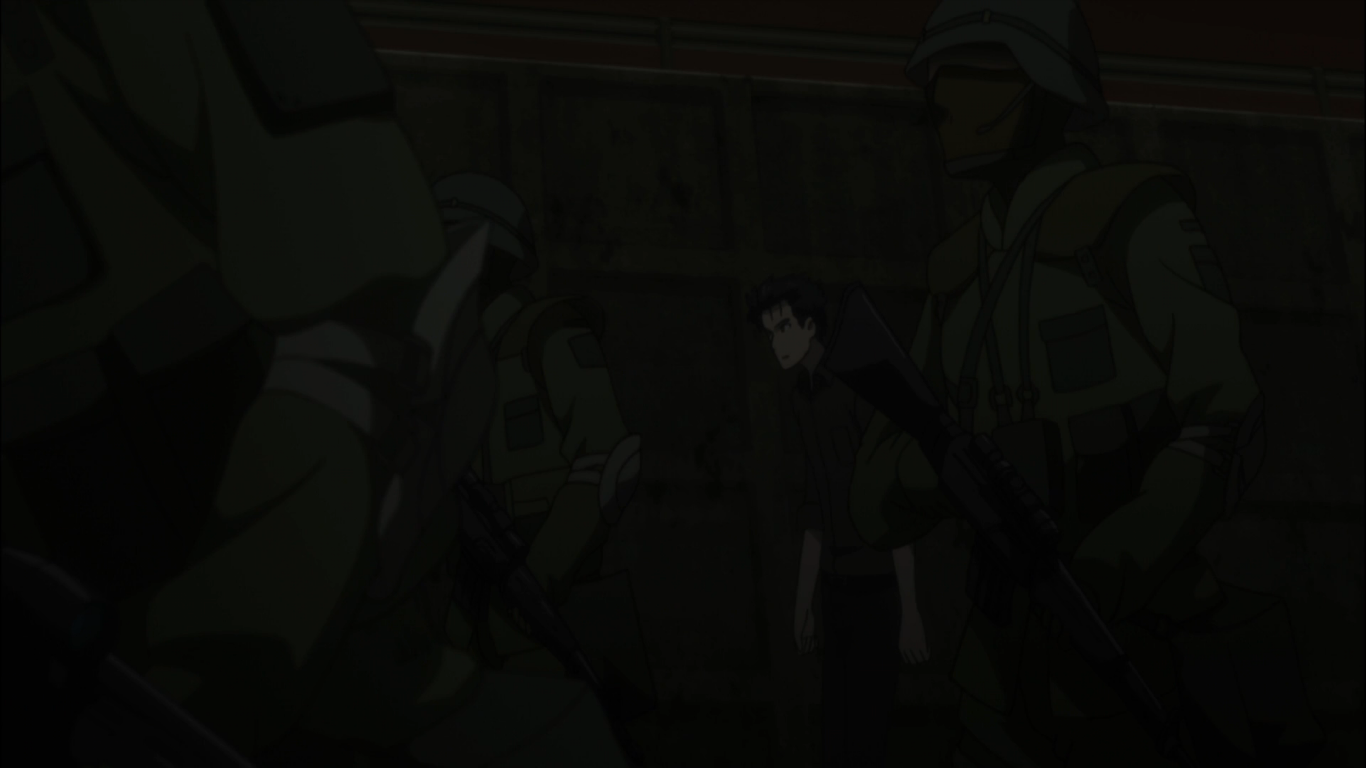
In the VN, the war timeline takes up what I believe is roughly a good hour or so of gameplay. It’s a fleshed out world in its own right which is fully explained, and scarier than that, it’s triggered while Okabe is still in the lab with the rest of the members whilst he’s still participating in the party, not while he’s on the roof talking to Amadeus. And due to his Reading Steiner activating, he actually spends about a month in this timeline, meaning that when he returns, he’s lost exactly that much time since Christmas. He fainted at the party, and a different ‘Okabe’ was living in his body during the time he was gone. In the anime, his experiences in the war timeline seem vague in terms of their timing and he returns instantly, as if it were some kind of heightened reality. I can understand the decision to not adapt it fully, as the war timeline is actually something that is ultimately superfluous to the plot in the VN, that isn’t really expanded upon after its initial appearance. But it did a good job of creating the sense that Okabe wasn’t in control of which timeline he was in anymore, that somebody else in the world might be experimenting with time travel. It also reminds him of the future that might be waiting for him if he doesn’t do anything. By providing an alternate present that’s shows us exactly the kind of scenario that Suzuha is trying so desperately to prevent, we get a greater sense of the stakes, especially since not even the original Steins;Gate actually had Okabe or the viewer live through the war.
It’s possible that the anime is setting up the war timeline for a later payoff, but as for what that would be, I couldn’t say, as the treatment of it here is the biggest deviation from the VN that the anime has made so far. And so far this deviation has been the sloppiest the adaptation has been so far, which doesn’t instill much confidence.
Case in point, following the opening sequence, the anime follows the VN almost slavishly. It’s far from a bad episode, but for someone in my position there weren’t very many surprises here. We’re introduced to Suzuha’s mission to find Kagari, Mayuri’s future adopted daughter and a new character to the franchise in this episode. We see some flashbacks of how Kagari ended up on Suzuha's mission to the past, as well as how they got seperated in 1998. I imagine Kagari's sudden decision to point a gun at Suzuha will be intriguing to many new viewers, and the scene is quite tense and mysterious. To help find Kagari in the current year (or, 2010) Amadeus offers to hack into some computers to help everyone track her down. On top of that, Daru hires Moeka to help track down Kagari, and Okabe’s panic attack when seeing Moeka again serves as this episode’s stinger moment.
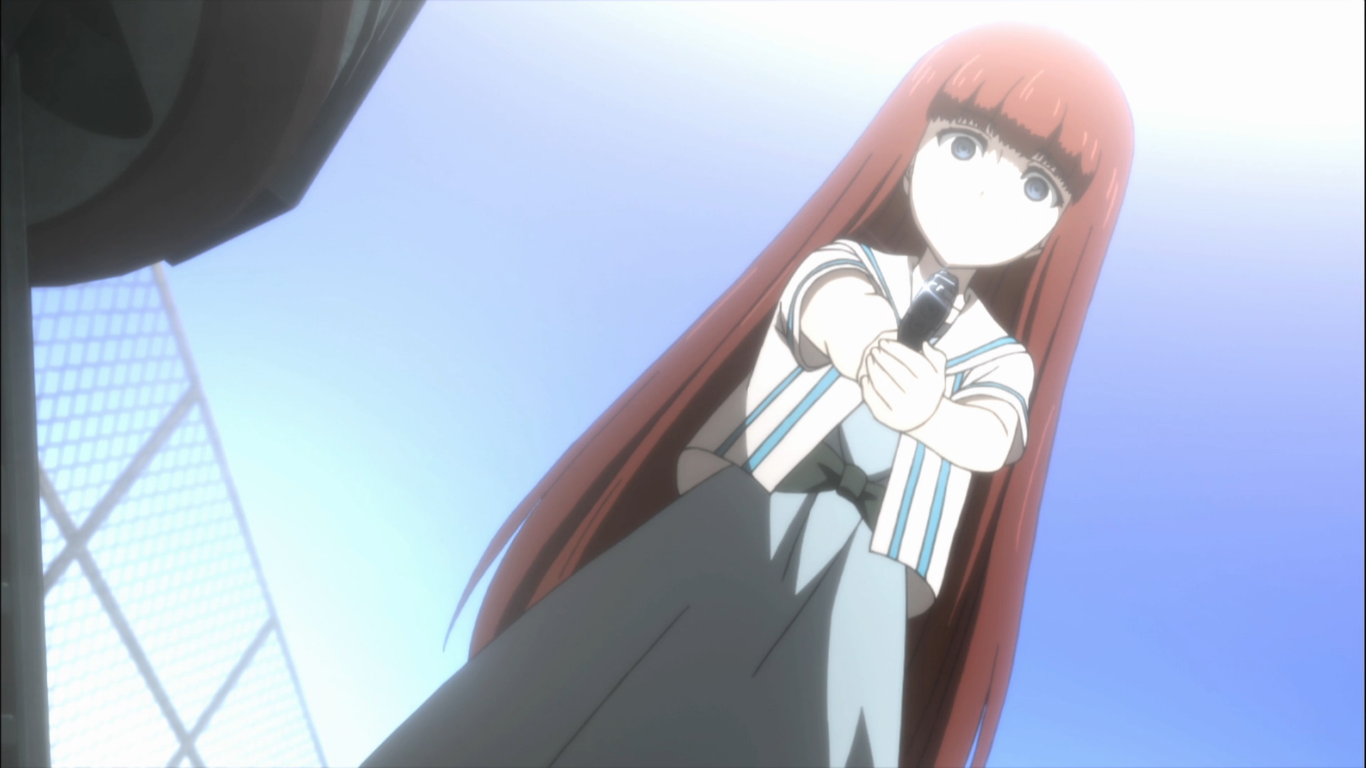
There’s a few things I want to point out that I think the adaption is doing well, but those examples come from the previous two episodes.
First is the design of Amadeus Kurisu, who has obviously been in every episode since the second one. Usually CG characters in anime that are juxtaposed with the 2D art look really bad and out of place, but here, I feel like CG animation was an excellent choice. It makes Amadeus feel like a separate entity in this world, a fake being who lives in computers. In the VN, Amadeus had the same artstyle as the rest of the characters, meaning you could conceivably believe that she was a photo-realistic depiction of the real Kurisu. And while many of the close-up shots of Amadeus seem to be rendered in 2D (Presumably because a close up of a CG model would look much too ugly) the CG shots do a good job of making Kurisu actually feel like an AI. The etheral blue glow surrounding her in both the CG and 2D shots also help lend to this effect.
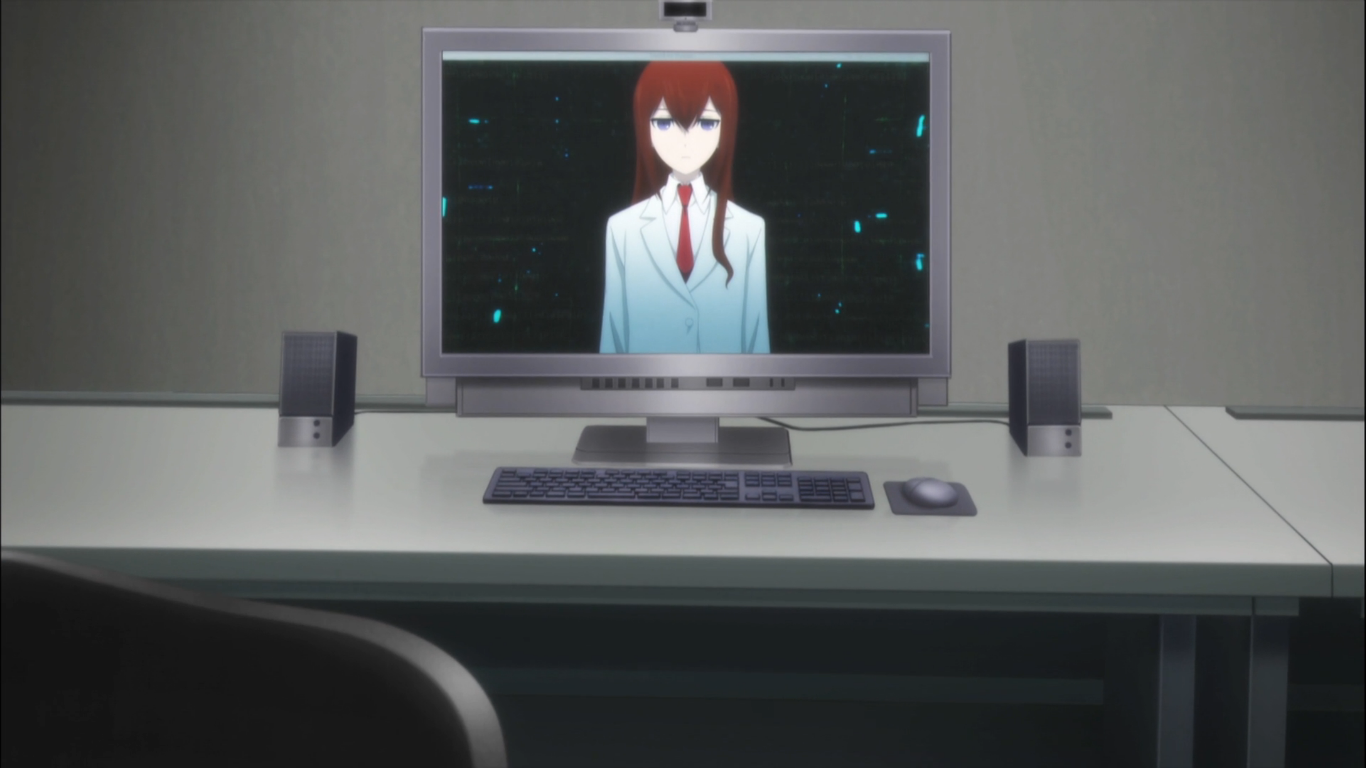
The second thing I like is some of the shots we’ve been seeing of Okabe talking to Kurisu. Such as in episode two when Okabe takes a call from Kurisu just a short distance away from Mayuri, and the image of Okabe’s form silhouetted as he stares down at his phone whilst Mayuri watches him with a concerned gaze does an excellent job at conveying the distance Okabe’s friends feel that he is putting between them, and how Mayuri knows something is wrong with him but isn’t quite sure what’s making Okabe so miserable. His inability to cope with Kurisu’s death is changing him into someone Mayuri doesn’t quite recognise.
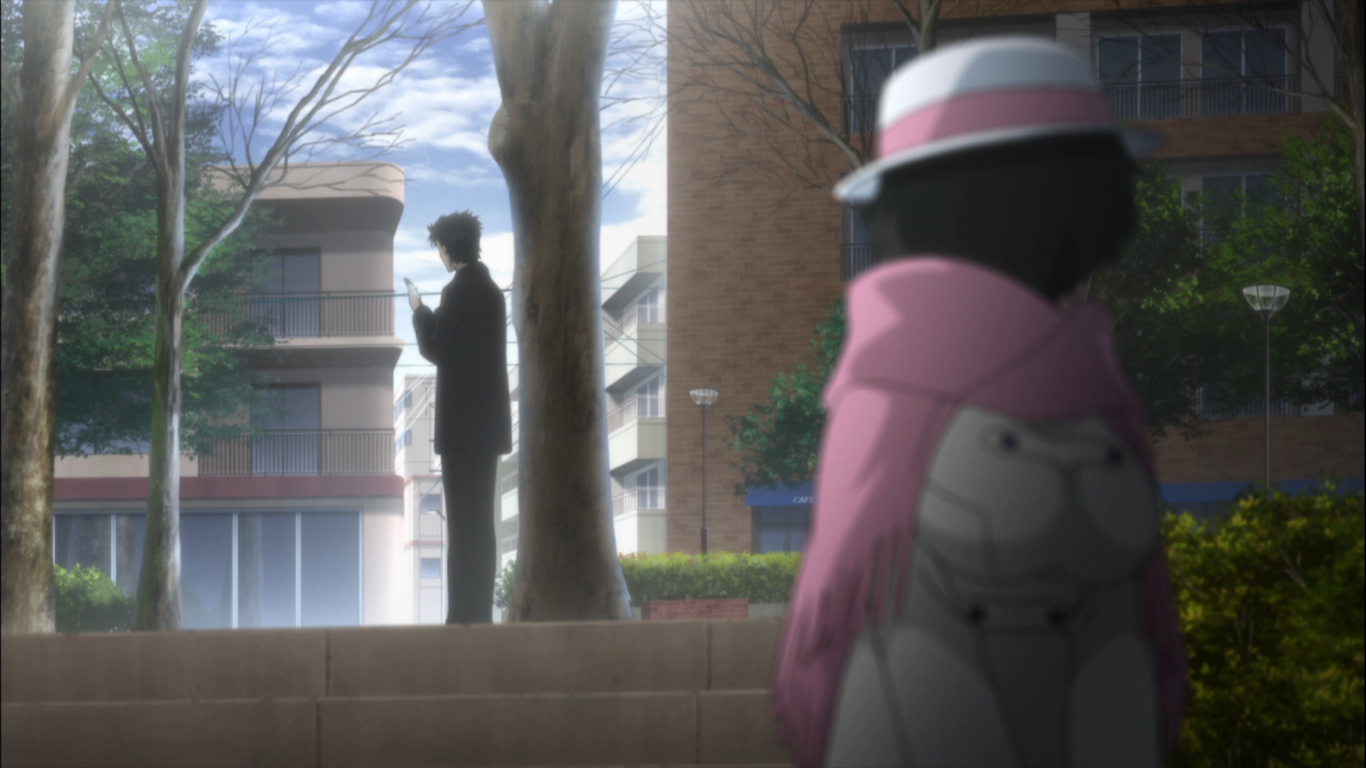
Episode 3 has a similar scene, where Okabe is talking to Amadeus, and realises that she really is a perfect replica. The longing, regret, melancholy and love on Okabe’s face says more than any amount of internal monologue ever could. This is why Maho’s words at the end of episode 3 hit him so hard- because he was able to convince himself, if even for a moment, that the Kurisu on his phone was as authentic as the real thing, and that he really was talking to her. The genuine connection he has to Kurisu shines through, and it hits hard.
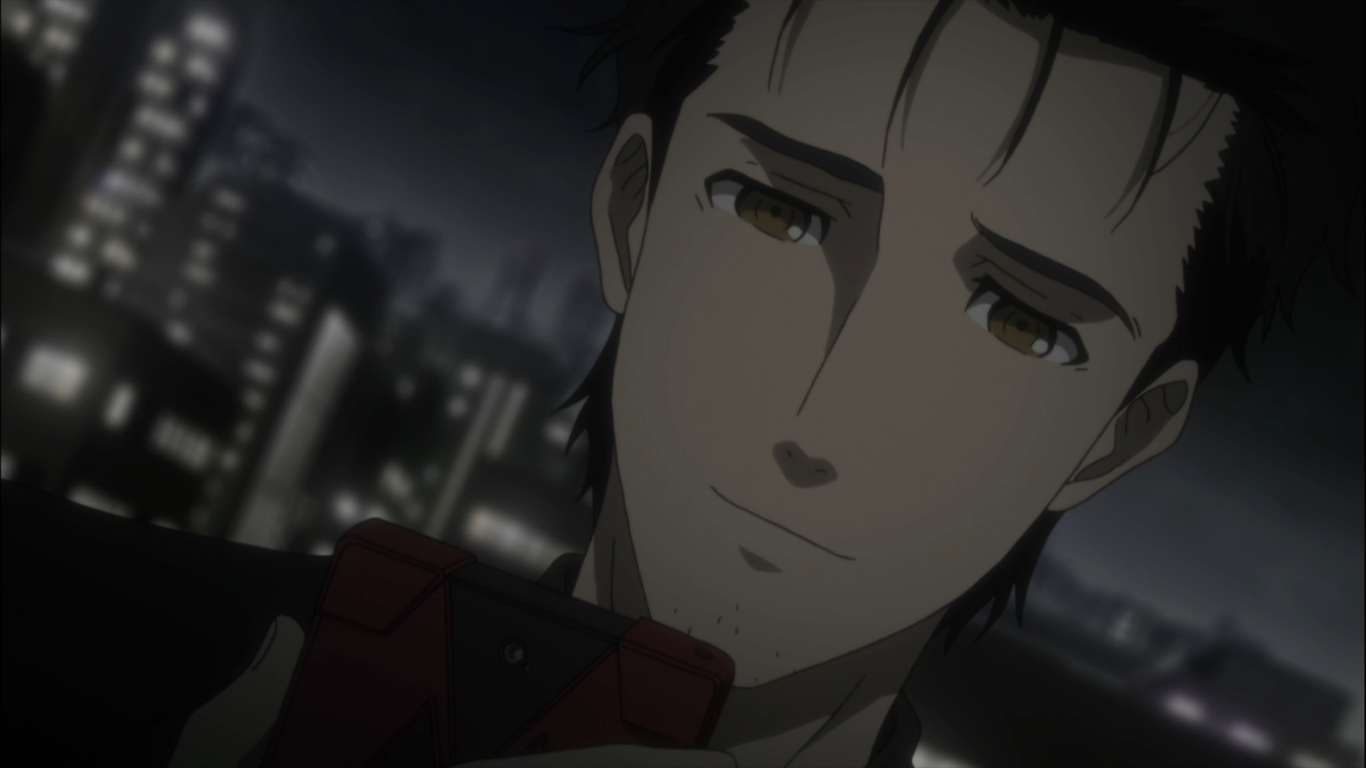
It might be another few weeks before I talk about Steins;Gate 0 again, but I have no doubt that I eventually will have more to say. There’s certainly a lot to say about Steins;Gate 0 as a whole but I’ll have to wait until the anime has played out its cards and we’re all on the same page before I get into the meat of the story. I could always review the visual novel by itself on its own merits, but that seems less interesting and less relevant than following the anime right now.
For now, though, I’m mostly just cautiously waiting for how the anime is going to progress from here on out. I can say that right now we’re not on the true ending route- so seeing how things will tie together into a continuous, 24 episode narrative will be interesting. It could either be brilliantly done, or potentially as sloppy as the opening minutes of this episode. For now, all we can do is wait.
